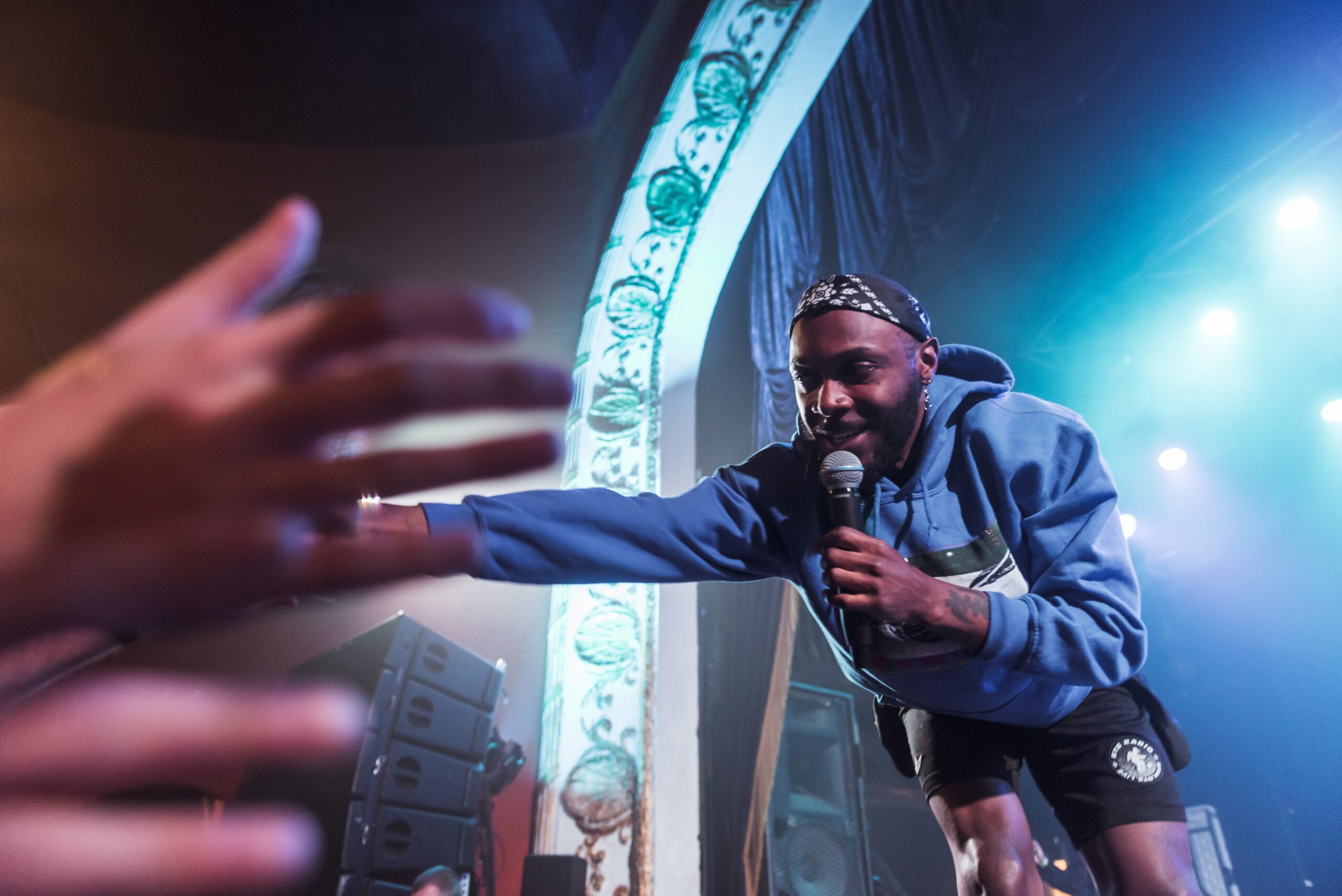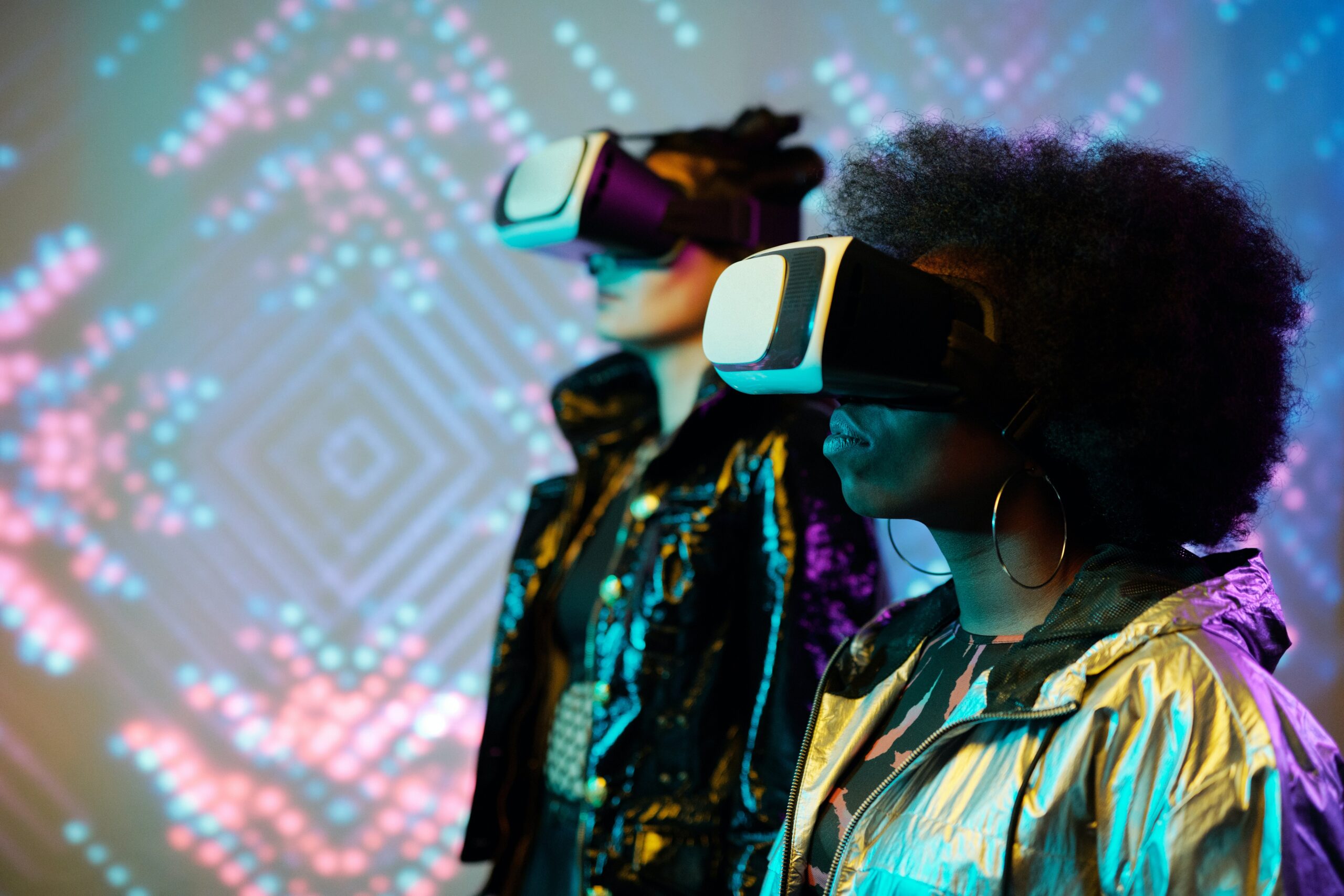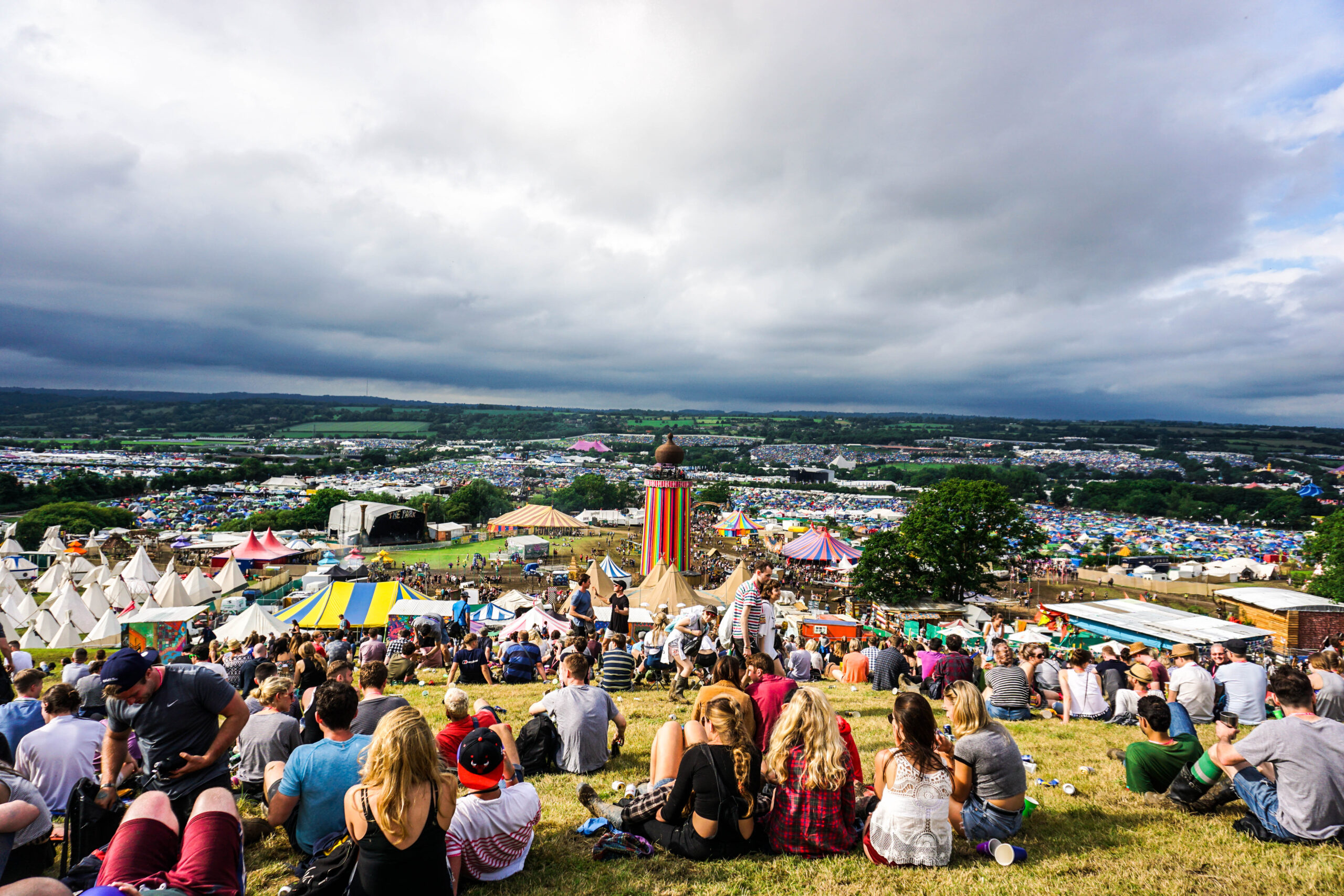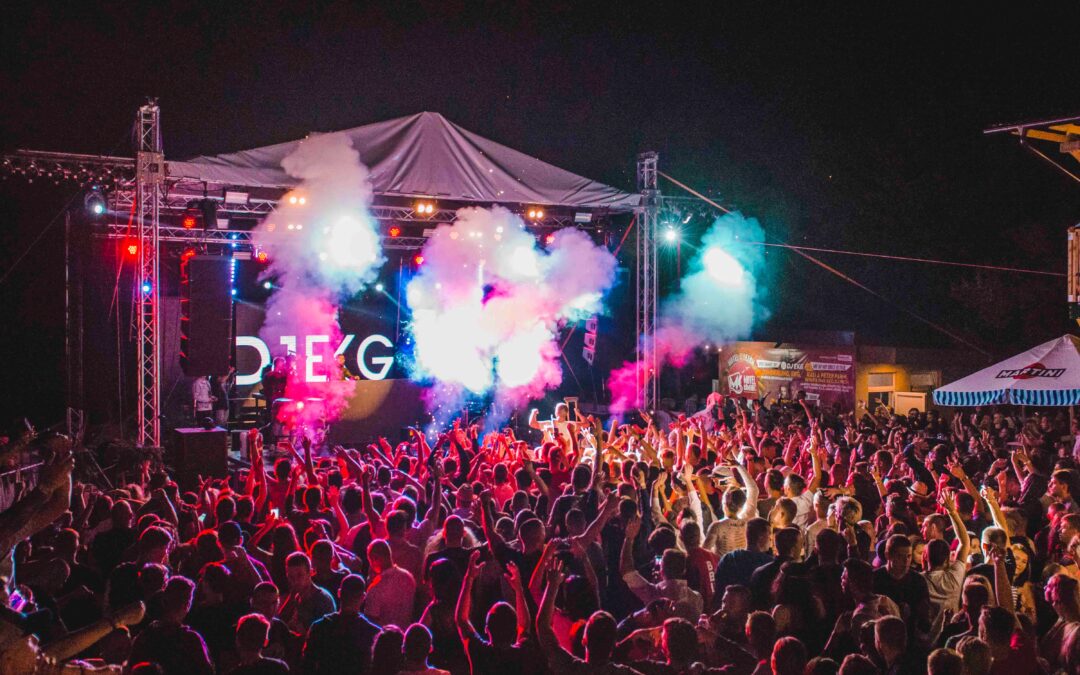Music festivals are events that bring together music lovers from all over the world to celebrate their favorite artists and genres. These festivals have gained immense popularity in recent years, with millions of attendees flocking to various music festivals held across the globe.
But beyond the excitement of the music and the experience for attendees, music festivals also have a significant impact on the local economy.
In this blog post, we will explore how music festivals affect the local economy, benefiting various sectors such as tourism, hospitality, and local businesses.
Economic Benefits of Music Festivals
One of the primary ways music festivals impact the local economy is through increased tourism and visitor spending.
Music festivals often attract thousands or even millions of out-of-town visitors, leading to significant spending on accommodations, dining, transportation, and shopping, which contributes to the local economy.
According to a report by Eventbrite and Music Canada, 49% of festival attendees in Canada are from out of town, and they spend an average of $713 CAD per festival, with 76% spending on food, 61% on accommodations, and 50% on shopping and transportation.
For example, the Coachella Valley Music and Arts Festival held in California, USA, is known to attract music enthusiasts from around the world.
The festival has a significant economic impact on the local region, with attendees spending money on accommodations, food, transportation, and other services, leading to increased revenue for local businesses and the creation of jobs in the tourism industry.
According to NBC Los Angeles, Coachella generated $1.4 billion in economic activity for the Coachella Valley region.
Music festivals also provide a boost to local businesses. During festivals, attendees typically spend money on food, merchandise, and souvenirs, supporting local vendors and suppliers.
Many festivals also collaborate with local businesses, such as food trucks, craft vendors, and local artisans, to provide services and products to festival-goers.
For example, the Austin City Limits Music Festival in Texas, USA, partners with local food vendors and artisans, generating millions of dollars in revenue for these businesses and showcasing the local culinary and artistic culture.
Furthermore, music festivals can result in an increase in tax revenue for the local government. As festivals generate economic activity, they contribute to the local tax base, including sales taxes, hotel taxes, and other taxes associated with spending by attendees.
These additional revenues can be used to invest in local infrastructure, services, and community development, benefiting the local economy in the long run.
Cultural and Social Impacts of Music Festivals
In addition to the economic benefits, music festivals also have significant cultural and social impacts on local communities. Music festivals often provide a platform for local artists and performers to showcase their talent, promoting local culture and art.
Many festivals incorporate local musicians, dancers, and artists in their lineups, providing them with exposure to a broader audience and helping to preserve and promote local cultural traditions.
This exposure can lead to increased recognition and opportunities for local artists, contributing to the cultural richness and diversity of the region.
Music festivals also enhance community engagement. Festivals create a sense of community pride as they become a source of local identity and pride. Residents often feel a sense of ownership and participation in the festival, which fosters a sense of community cohesion and belonging.

Musician JPEGMAFIA performing live
Festivals also provide opportunities for volunteerism and civic participation, as many rely on volunteers for various tasks such as event organization, hospitality, and logistics.
This volunteerism can strengthen social ties within the community and promote a sense of community ownership and engagement in the festival.
However, it’s important to acknowledge that music festivals can also have social impacts that may not always be positive. Large festivals can disrupt the daily lives of local residents, especially those living in close proximity to the festival grounds.
Issues such as noise pollution, traffic congestion, and increased demand for public services can pose challenges to local communities.
Festival-goers may also engage in risky behaviors, such as excessive drinking or drug use, which can impact local safety and well-being.
To mitigate these challenges and maximize the positive social impacts of music festivals, effective communication and collaboration between festival organizers, local government, and residents are crucial.
Dialogue and engagement with local communities can help address concerns, implement sustainable solutions, and ensure that the social impacts of music festivals are positive and beneficial for all stakeholders.
Case Studies and Examples
Several case studies and examples from around the world demonstrate the impact of music festivals on local economies. One notable example is the Glastonbury Festival in the United Kingdom, which is one of the largest and most well-known music festivals globally.
The festival attracts over 200,000 attendees each year and has a significant economic impact on the local region.
A study by EY estimated that the 2017 edition of the Glastonbury Festival contributed £103 million to the local economy, supporting local businesses and generating tax revenues for the government.
Another example is the Ultra Music Festival held in Miami, USA, which is a major electronic dance music festival attracting attendees from all over the world.
According to a report by the Greater Miami Convention & Visitors Bureau, the 2019 edition of Ultra Music Festival generated over $168 million in economic impact for Miami-Dade County, supporting local jobs and businesses.
In Australia, the Splendour in the Grass festival held in New South Wales has been found to have a significant economic impact on the local economy.
A study by the National Centre for Cultural and Economic Impact estimated that the 2019 edition of the festival generated over $66 million in economic output, supporting local jobs and businesses in the region.
These case studies highlight how music festivals can contribute to the local economy by attracting visitors, generating spending, supporting local businesses, and creating jobs.
However, they also demonstrate the importance of conducting thorough economic impact assessments to accurately measure the contributions of music festivals to the local economy and inform decision-making.
Technological Innovations in Music Festivals
Technology has also played a significant role in shaping the music festival industry and its impacts on the local economy.
Music festivals have adopted various technological advancements to enhance the production, promotion, and attendee experience of festivals.
One notable technological innovation is the use of social media and digital marketing for festival promotion and engagement.
Music festivals leverage social media platforms, such as Facebook, Instagram, Twitter, and YouTube, to create buzz, engage with potential attendees, and promote ticket sales.
Social media also provides a platform for festival-goers to share their experiences, photos, and videos, creating user-generated content that helps promote the festival and attract more attendees.
Virtual reality (VR), augmented reality (AR), and live-streaming technologies have also been incorporated into music festivals to enhance the attendee experience and accessibility.

Virtual Reality (VR) Headsets
VR and AR technologies allow festival-goers to have immersive experiences, such as virtual tours of festival grounds, interactive performances, and behind-the-scenes content.
Livestreaming technologies enable festivals to reach a wider audience, including those who are unable to attend the festival in person and generate additional revenue through virtual ticket sales.
For example, the Tomorrowland music festival in Belgium has been a pioneer in using technology to enhance the attendee experience.
The festival has introduced VR experiences that allow attendees to explore virtual stages and interact with virtual performances.
The festival also live streams its performances, reaching millions of viewers around the world and generating additional revenue through virtual ticket sales.
Cashless payment systems and RFID (Radio-Frequency Identification) wristbands are also being increasingly used at music festivals to streamline transactions and enhance the attendee experience.
Cashless payment systems enable festival-goers to make purchases using RFID wristbands or mobile apps, eliminating the need for cash and reducing transaction times.
These systems also provide valuable data to festival organizers, such as spending patterns and attendee preferences, which can inform future festival planning and marketing strategies.
Additionally, sustainability and environmental considerations have become important factors in the planning and execution of music festivals.
Many festivals have implemented green initiatives to minimize their ecological footprint and promote sustainable practices among attendees.
These initiatives may include waste reduction and recycling programs, renewable energy sources, water conservation measures, and sustainable food and beverage options.
For example, the Bonnaroo Music and Arts Festival in the USA has implemented several sustainability initiatives, including a robust recycling program, a solar-powered stage, and partnerships with local farmers to provide organic and locally-sourced food options.
The festival also promotes sustainable transportation options, such as carpooling and public transportation, to reduce carbon emissions from transportation to the festival grounds.
Music festivals are also increasingly using technology to address safety and security concerns. For instance, many festivals have implemented advanced security measures, such as enhanced surveillance systems, metal detectors, and security personnel, to ensure the safety of attendees.
Additionally, some festivals have incorporated technology-driven solutions, such as facial recognition and biometric scanning, to enhance security and streamline entry processes.
One example of the use of technology for safety and security purposes is the Coachella Valley Music and Arts Festival in California, USA, which has implemented advanced security measures, including facial recognition technology and RFID wristbands for access control.
These technologies not only enhance the safety and security of the festival but also improve the overall attendee experience by reducing entry times and lines.
Pop-Culture Examples
Music festivals have become an integral part of popular culture, influencing fashion, music trends, and social behaviors.
Several popular culture examples demonstrate the impact of music festivals on society and how they have become more than just a place to listen to music, but rather a cultural phenomenon.
One of the most iconic examples is the Woodstock Music & Art Fair held in 1969 in Bethel, New York, USA. Woodstock is often considered a pivotal moment in music history, representing the counterculture movement of the 1960s and a celebration of peace, love, and music.
Woodstock attracted over 400,000 attendees and featured performances by legendary artists such as Jimi Hendrix, The Beatles, and Janis Joplin, among others.
The festival has since become a symbol of the power of music to bring people together and promote social change.
In recent years, the Coachella Valley Music and Arts Festival has become a pop-culture phenomenon, attracting thousands of attendees from around the world.
The festival, held annually in California, USA, has become known not only for its music performances but also for its celebrity sightings, fashion trends, and social media buzz.
Coachella has become a cultural event that sets the tone for music, fashion, and lifestyle trends for the year, influencing popular culture and shaping societal behaviors.
Another example is the Tomorrowland music festival, held in Belgium, which has gained global recognition for its immersive and innovative experiences.
Tomorrowland has become a symbol of the electronic dance music (EDM) culture, attracting top EDM DJs and performers, and setting trends in music production, stage design, and festival experiences.
The festival has also spawned several international editions, including Tomorrowland Winter and Tomorrowland Around the World, further expanding its impact on global pop culture.
Case Studies and Examples from Pop Culture
Coachella Music and Arts Festival
Coachella is one of the most iconic and influential music festivals in the world, known for its star-studded lineup, art installations, and celebrity attendees.
It has also been at the forefront of integrating technology into the festival experience, with features such as cashless payment systems, RFID wristbands for entry, and a dedicated festival app that provides real-time updates, interactive maps, and personalized schedules for attendees.
Coachella has also showcased the importance of sustainability, with initiatives such as its recycling and waste reduction program, solar-powered stages, and partnerships with environmental organizations.
Tomorrowland
Tomorrowland is one of the largest electronic dance music (EDM) festivals in the world, known for its elaborate stages, immersive experiences, and innovative use of technology.
Tomorrowland has successfully created a global community of electronic music fans through its live-streaming platform, Tomorrowland Around the World, which offers a virtual festival experience complete with virtual stages, interactive experiences, and virtual meet-and-greets with artists.
This hybrid festival model has allowed Tomorrowland to reach a much wider audience beyond the physical event, showcasing the potential of virtual elements in the future of music festivals.
Glastonbury Festival
Glastonbury is one of the oldest and most renowned music festivals in the world, known for its diverse lineup, activism, and sustainability efforts.
Glastonbury has been a pioneer in promoting social causes, with initiatives such as its Greenpeace field, which raises awareness about environmental issues, and its Shangri-La area, which showcases political and social activism through art installations and performances.
Glastonbury has also been a leader in creating inclusive spaces, with dedicated areas for LGBTQ+ communities, people with disabilities, and families.

2016 Glastonbury Music Festival
Afropunk Festival
Afropunk is a unique music festival that celebrates black culture, diversity, and activism. The festival showcases a diverse lineup of artists from various genres, such as punk, hip-hop, and R&B, and promotes inclusivity, self-expression, and social awareness.
Afropunk has been at the forefront of promoting diversity and inclusivity in the music festival industry, with a focus on creating safe spaces for black and marginalized communities.
Afropunk also incorporates other forms of artistic expressions, such as fashion, art, and activism, making it a multidimensional and socially-conscious festival.
Statistics and Insights
Economic Impact
Music festivals have a significant economic impact on the local and global economy. According to a report by Eventbrite and Music Canada, music festivals in Canada contributed $3.1 billion to the country’s GDP in 2019, supporting over 73,000 jobs.
In the United States, music festivals generated $3.6 billion in direct spending and contributed $1.8 billion to the GDP in 2018, according to a report by the International Festival and Events Association.
The economic impact of music festivals is not limited to ticket sales and merchandise but also extends to areas such as accommodation, transportation, food and beverage, and local businesses.
Attendee Demographics
Music festivals attract a diverse demographic of attendees. According to a study by Nielsen, 51% of music festival attendees in the United States in 2018 were aged 18-34, and 46% had a household income of $75,000 or more.
Music festivals also draw attendees from various ethnicities, with 40% of attendees in the U.S. identifying as non-white, according to the same Nielsen study.
This diversity in attendee demographics presents an opportunity for festivals to create inclusive experiences that cater to the interests and preferences of a wide range of attendees.
Social Media and Influencer Marketing
Social media has played a significant role in the growth and promotion of music festivals. Festival-goers often share their experiences on social media platforms, generating buzz, and creating FOMO (fear of missing out) among their peers.
Influencer marketing has also become prevalent in the music festival industry, with influencers and celebrities attending festivals and sharing their experiences with their large online following. This has led to increased visibility, brand exposure, and ticket sales for festivals.
According to a report by Nielsen, 51% of U.S. music festival attendees in 2018 discovered festivals through social media, and 63% used social media during the festival to share their experiences.
Sustainability and Environmental Consciousness
As environmental issues gain increasing attention, music festivals have started to prioritize sustainability and environmental consciousness. Many festivals have implemented initiatives such as waste reduction programs, recycling, composting, and the use of renewable energy sources.
For example, the Glastonbury Festival introduced a “Love the Farm, Leave No Trace” campaign to encourage responsible waste disposal and reduce the festival’s environmental impact. In addition, festivals like Coachella and Bonnaroo have partnered with environmental organizations to raise awareness about climate change and encourage eco-friendly practices among attendees.
Sustainability and environmental consciousness have become important considerations for festival-goers, and festivals that prioritize these initiatives can attract environmentally conscious attendees and align with their values.
Virtual and Hybrid Festival Experiences
The COVID-19 pandemic has significantly impacted the music festival industry, leading to the cancellation or postponement of many events. However, it has also accelerated the adoption of virtual and hybrid festival experiences.
Virtual festivals, such as Tomorrowland Around the World and virtual editions of Coachella and SXSW, have gained popularity, providing a unique and accessible festival experience for music fans around the world.
These virtual festivals offer features such as virtual stages, interactive experiences, and virtual meet-and-greets with artists. Hybrid festival models, which combine physical and virtual elements, have also emerged, allowing festivals to reach a wider audience beyond the physical event.
For example, the Austin City Limits Music Festival in 2020 featured a virtual edition in addition to its physical event, providing options for both in-person and virtual attendance.
These virtual and hybrid festival experiences have the potential to continue even after the pandemic, as they offer opportunities for increased accessibility, global reach, and innovative ways of experiencing festivals.
Conclusion
Music festivals have come a long way since their inception, evolving from small gatherings to massive events with global reach and significant economic impact. They have become cultural phenomena, shaping music trends, fashion, and lifestyle, and providing memorable experiences for millions of attendees around the world.
However, as the music festival industry continues to evolve, it faces various challenges, such as increasing competition, changing attendee preferences, and the impact of external factors like the COVID-19 pandemic.
To remain relevant and thrive in the future, music festivals need to adapt and innovate, incorporating technology, sustainability, inclusivity, and personalized experiences into their offerings.
With the continued growth of technology, we may see more virtual and hybrid festival experiences that offer opportunities for increased accessibility and global reach.
The integration of sustainability initiatives, such as waste reduction programs, renewable energy sources, and environmental partnerships, will likely become more prevalent as environmental concerns continue to gain attention.
In conclusion, music festivals have become a global phenomenon, with their cultural, economic, and social impact felt around the world. They have evolved from small gatherings to massive events, attracting millions of attendees, generating billions of dollars in revenue, and shaping music trends, fashion, and lifestyle.
As festival organizers, artists, brands, and attendees alike navigate the ever-changing landscape of the music festival industry, it will be crucial to embrace change, adapt to new technologies and trends, and prioritize sustainability, inclusivity, and personalized experiences to ensure the continued success and longevity of music festivals in the years to come.
So, let’s put on our wristbands, grab our sunscreen, and get ready for the next unforgettable music festival experience!






